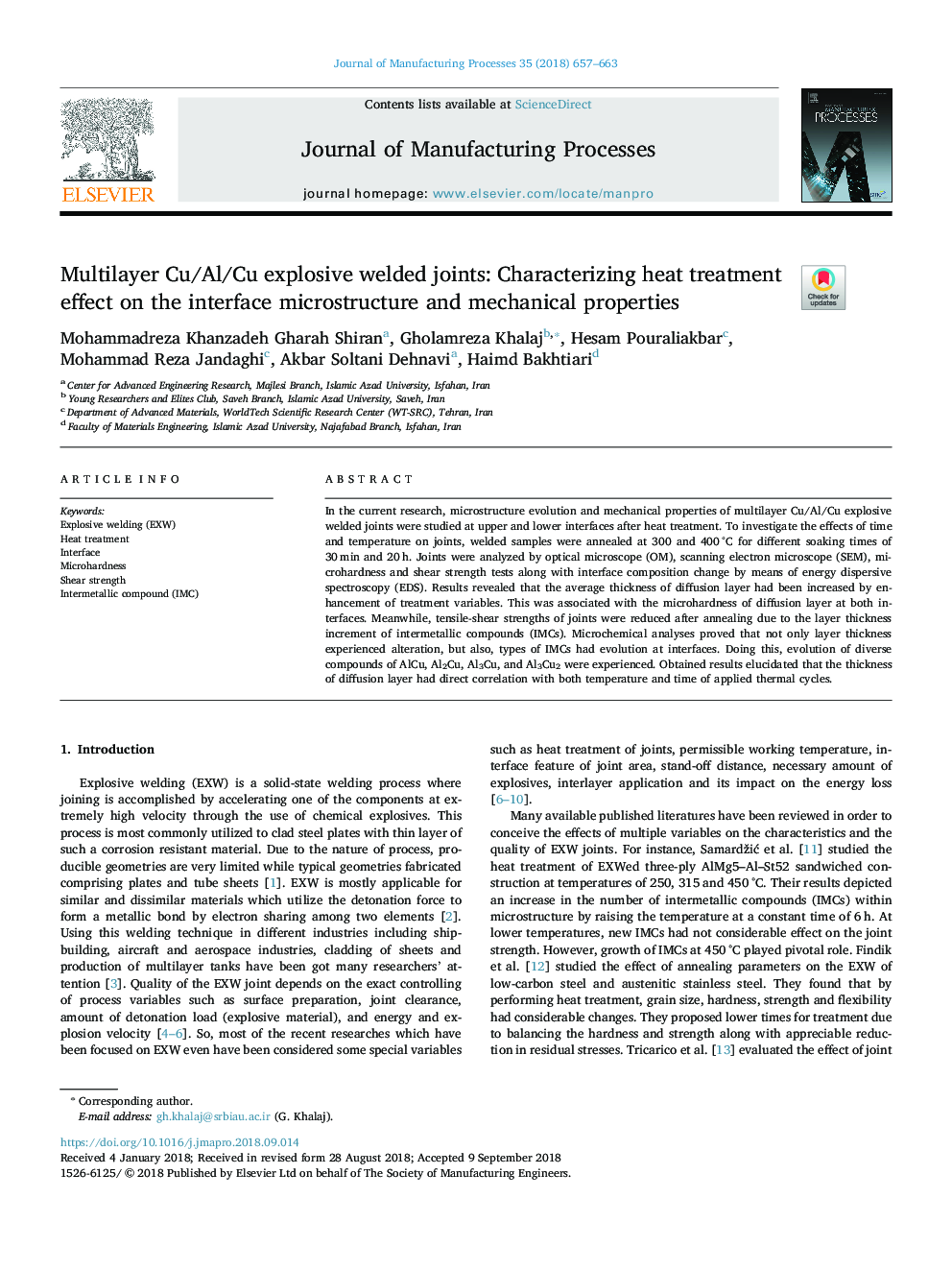| Article ID | Journal | Published Year | Pages | File Type |
|---|---|---|---|---|
| 11007188 | Journal of Manufacturing Processes | 2018 | 7 Pages |
Abstract
In the current research, microstructure evolution and mechanical properties of multilayer Cu/Al/Cu explosive welded joints were studied at upper and lower interfaces after heat treatment. To investigate the effects of time and temperature on joints, welded samples were annealed at 300 and 400â°C for different soaking times of 30âmin and 20âh. Joints were analyzed by optical microscope (OM), scanning electron microscope (SEM), microhardness and shear strength tests along with interface composition change by means of energy dispersive spectroscopy (EDS). Results revealed that the average thickness of diffusion layer had been increased by enhancement of treatment variables. This was associated with the microhardness of diffusion layer at both interfaces. Meanwhile, tensile-shear strengths of joints were reduced after annealing due to the layer thickness increment of intermetallic compounds (IMCs). Microchemical analyses proved that not only layer thickness experienced alteration, but also, types of IMCs had evolution at interfaces. Doing this, evolution of diverse compounds of AlCu, Al2Cu, Al3Cu, and Al3Cu2 were experienced. Obtained results elucidated that the thickness of diffusion layer had direct correlation with both temperature and time of applied thermal cycles.
Related Topics
Physical Sciences and Engineering
Engineering
Industrial and Manufacturing Engineering
Authors
Mohammadreza Khanzadeh Gharah Shiran, Gholamreza Khalaj, Hesam Pouraliakbar, Mohammad Reza Jandaghi, Akbar Soltani Dehnavi, Haimd Bakhtiari,
